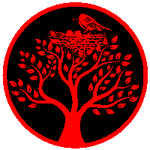-
Posts
797 -
Joined
-
Last visited
-
Days Won
4
Content Type
Profiles
Forums
Events
Store
Downloads
Gallery
Everything posted by MauroP
-
Hi, here you have a NBTHK certificate. The relevant informations are as follow: A kanteisho (certificate) B subject (here a katana) C signature (here 備陽長船藤原祐盛); the sword also report the date of forging (文政二年二月日 should be february 1819) D the dimension of the blade
-
紀府住 正喜 - Kifu jū Masayoshi
-
Ciao Luca, the seller explicitly stated that Ginza was an error in the appraisal paper: 鑑定書の「広島住 銀座長介」は「廣嶋住 銀屋長介」の誤記。- "Hiroshima jū Ginza Chōsuke" in the appraisal is an error for "Hiroshima jū Gin'ya Chōsuke". Sometime such errors happen, and I've found some in my records of NBTHK kaiteisho.
- 4 replies
-
- 1
-

-
- tsuba
- translation
-
(and 1 more)
Tagged with:
-
報國盡忠 something like "loyalty and patriotism"
-
Hi Sebastien, no clear idea about the school. The theme is called iwashi no atama (鰯の頭 - sardine heads) and refers to a ceremony of driving out evil spirits. During Setsubun (the day before the beginning of spring) some families put up small decorations of sardine heads and holly leaves on their house entrances so that bad spirits will not enter.
-
Worth reminding a post a couple of years old about the same subject: https://www.militaria.co.za/nmb/topic/14025-next-best-thing-to-having-nbthk-papers Bye, Mauro
-
Thank you Dale, the tsuba from Christies is reported as Heianjō, but I don't think brass inlays alone are enough to make such a call...
-
I should be a wiser man... I know that making up a coherent collection needs making choices. But actually I'm not rational in collecting. In that strange year of lock-down, social distancing and hard work I had to wait months to receive in hands, almost at the same time, all my acquisitions. Definitely I'm not a "serious" collector, but after all I'm quite happy about my new pieces. No masterpiece here but some interesting opportunity for study. 1 signed Echizen jū Kinai (越前住 記内), possibly Yondai Ishikawa (circa 1640). 2 otafuku-mokkō-gata tsuba with an unusual tetsu-fukurin, possibly Edo Higo (thanks to Mark from NMB). 3 maple and deer antler tsuba, possibly Shōami. 4 plum blossoms in moonlight, possibly kodai Higo (thanks to Thomas AKA Leporello). 5 signed Jakushi (若芝), quite typical of the school, and the only tsuba I purposely searched for buying. 6 Musashino theme tsuba; the still good zōgan remakably contrast with the weared iron surface, and make me think it could be an old tōshō tsuba (just 3,5 mm thick) repurposed and decorated in late Edo. 7 mitsudomoe, inlaid dew drops (or toad skin?); signature unreadable. 8 bamboo and snow tsuba, possibly Kyō-Shōami.
-
Ciao Luca, "gan no nami" sounds like a genitive case. I suppose that simply gan nami or gan ni nami (雁に波) should be the correct form (but let a true expert in Japanese chime in). See: https://artsandculture.google.com/asset/雁に波文皿 肥前焼・-柿右衛門様式-plate-with-geese-and-waves/-AH96HQsuwb9nQ Love your Heianjō findings.
-
-
-
The signature should read Sano Naoyoshi, but one kanji of family name is different in reported examples, so possibly gimei.
-
Hi Reid, why you want a kanteisho for it? It will cost you quite a lot, with a comparatively little increase in market value of your tsuba. Of course if you want to enjoy the experience, go for it... Regards, Mauro
-
Agree with Geraint, it's a sanmai awase tsuba, i.e. a mass-produced one, BUT it's an old one (pre-Edo, possibly) and should deserve a ko-kinko certification. BTW, the core layer should be copper, so non-magnetic (try it).
-
-
-
Hi Mark, I'd rather suggest a Hizen attribution for your tsuba. Edo Higo could also be a less likely call. The "weared" appearance of nunome-zōgan usually seen in Jakushi tsuba is also present in some Hizen and Edo Higo works. Moreover Jakushi tsuba are usually signed (only one in six Jakushi tsuba is mumei in my database of NBTHK papers). Here below some Hizen examples:
-
Hi Grev, I'd suggest a descriptive definition like: 四方菱形透鐔 - shi-hō hishigata sukashi tsuba - diamond shapes in four directions openwork tsuba. Sometimes even NBTHK shinsa panel can't do better.
-
Hi Georg, I think you have three honest tsuba (Japanese words doesn't have plural forms), possibly from middle-late Edo time. Since they all are supposed to be used on katana/wakizashi, your pics are upside down. Little to say about the first one. The smaller one could be Shōami or Nara, the third one (with dragon and clouds) looks like Higo style.
-
Ciao Luca, the shinchū-zōgan decoration of your tsuba is usually referred as 桔梗唐草文 - kikyō karakusa-mon, so more a stylized pattern than a naturalistic representation. See: http://www.aisf.or.jp/~jaanus/deta/k/karakusamon.htm
-
Sometimes its hard to recognize a subject in artistic representation. Here a traditional representation of a plover (千鳥 - chidori), surely quite different from the true animal in nature.













